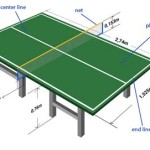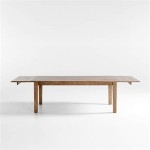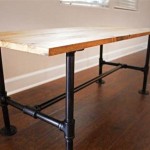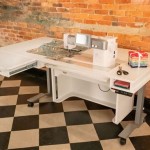White Living Room Tables: A Focal Point of Modern Design
White living room tables have emerged as a staple in contemporary interior design, offering a versatile and aesthetically pleasing solution for a variety of living spaces. Their inherent brightness and adaptability make them a popular choice for homeowners seeking to create a clean, modern, or even classically inspired environment. The selection of a white living room table involves careful consideration of factors such as style, material, size, and functionality, all of which contribute to the overall harmony and usability of the room.
White furniture, in general, possesses the unique ability to reflect light, thereby making a space feel larger and more open. This is particularly beneficial in smaller living rooms or those with limited natural light. A white table, whether it’s a coffee table, end table, or console table, can serve as a neutral backdrop that allows other decorative elements in the room to stand out. This neutrality also makes it easier to incorporate different color palettes and design styles without clashing.
The concept of white is not monolithic; there are numerous shades of white, each with its own subtle characteristics. From pure, stark white to warmer off-whites like cream or ivory, the choice of shade can significantly impact the overall ambiance of the room. A cooler, brighter white may be ideal for a modern minimalist aesthetic, while a warmer white might better suit a more traditional or cozy setting. Consider the existing wall color, flooring, and other furniture pieces when selecting the appropriate shade of white for the living room table.
The Versatility of White: Adapting to Diverse Styles
One of the primary reasons for the enduring popularity of white living room tables is their versatility in adapting to diverse interior design styles. Whether the homeowner prefers a minimalist, Scandinavian, modern, traditional, or even bohemian aesthetic, a white table can seamlessly integrate into the existing décor. The key lies in selecting a table design that complements the overall style of the room.
For a minimalist space, a simple, low-profile white coffee table with clean lines and minimal ornamentation is often the best choice. Materials like glass, metal, and engineered wood are commonly used in minimalist designs. In contrast, a Scandinavian-inspired living room might benefit from a white wooden table with tapered legs and a natural wood grain visible through the paint, adding a touch of warmth and texture.
Modern living rooms often incorporate geometric shapes and bold accents. A white table with a sculptural design or an interesting geometric base can serve as a focal point in such a space. Furthermore, white high-gloss finishes are frequently found in modern interiors, adding a touch of sophistication and reflectivity. For a more traditional living room, a white table with ornate carvings or a distressed finish can provide a sense of timeless elegance. A white painted wood table with turned legs or a marble top would be suitable for this style. Finally, a bohemian-inspired living room, characterized by eclectic patterns and textures, can benefit from a white table with a unique design or a handcrafted feel. A white-washed wooden table with woven details or a repurposed vintage table painted white can enhance the bohemian aesthetic.
The ability of white furniture to blend into different styles stems from its inherent neutrality. White acts as a blank canvas, allowing other colors, textures, and patterns to take center stage. By carefully selecting complementary accessories, such as colorful rugs, throw pillows, and artwork, homeowners can create a cohesive and visually appealing living room that reflects their personal style.
Material Considerations: Durability and Aesthetics
The material composition of a white living room table is a critical factor to consider, as it directly impacts the table's durability, aesthetics, and maintenance requirements. Common materials used in the construction of these tables include wood, metal, glass, marble, and engineered wood products. Each material offers unique advantages and disadvantages in terms of cost, durability, and visual appeal.
Solid wood tables, particularly those made from hardwoods like oak, maple, or birch, are known for their durability and longevity. A white painted wood table can provide a classic and timeless look, but it's important to choose a high-quality paint that is resistant to chipping and scratching. The type of finish applied to the white paint will also affect the overall look and feel of the table. A matte finish can create a softer, more rustic look, while a glossy finish can provide a more modern and sophisticated appearance.
Metal tables, often constructed from steel or aluminum, offer a sleek and contemporary aesthetic. White metal tables are typically powder-coated to provide a durable and scratch-resistant finish. Metal tables are generally easy to clean and maintain, making them a practical choice for high-traffic areas.
Glass-topped tables offer a sense of lightness and transparency, making them ideal for smaller living rooms. A white glass-topped table, often with a metal or wooden base, can create a visually open and airy feel. However, glass is susceptible to scratches and fingerprints, so regular cleaning is necessary.
Marble-topped tables exude luxury and sophistication. A white marble table, often with unique veining patterns, can serve as a stunning focal point in a living room. However, marble is a porous material that requires careful sealing to prevent staining. It is also relatively heavy and can be more expensive than other materials.
Engineered wood products, such as MDF (Medium-Density Fiberboard) and particleboard, are often used to construct more affordable white living room tables. These materials are typically covered with a white laminate or veneer to provide a smooth and durable surface. Engineered wood products are generally less expensive than solid wood but may not be as durable or long-lasting.
When selecting the material for a white living room table, consider the overall style of the room, the desired level of durability, and the maintenance requirements of the material. It's also important to consider the environmental impact of the materials used. Sustainable materials, such as reclaimed wood or bamboo, are becoming increasingly popular choices for environmentally conscious homeowners.
Functionality and Size: Optimizing Living Room Space
The size and functionality of a white living room table are essential considerations in ensuring that it meets the specific needs of the homeowner and complements the available space. A table that is too large can overwhelm a small living room, while a table that is too small may not provide sufficient surface area for everyday use. The intended use of the table, whether it's for serving drinks, displaying decorative items, or providing storage, will also influence the optimal size and features.
When selecting a coffee table, consider the size of the sofa and the available space between the sofa and the television. A general rule of thumb is to choose a coffee table that is approximately two-thirds the length of the sofa and positioned about 18 inches away from the sofa. The height of the coffee table should also be similar to the height of the sofa cushions to ensure comfortable access.
End tables, also known as side tables, are typically placed next to sofas or chairs to provide a convenient surface for lamps, books, or drinks. The height of an end table should be similar to the height of the armrest of the adjacent seating. The size of the end table will depend on the available space and the intended use. A small end table may be sufficient for a lamp and a few small items, while a larger end table may be needed to accommodate a larger lamp and additional storage.
Console tables are often placed against walls or behind sofas to provide a decorative and functional surface. A white console table can serve as a focal point in a living room, displaying artwork, plants, or other decorative items. Console tables can also provide valuable storage space, with drawers or shelves for storing books, magazines, or other items.
In addition to size, consider the functionality of the table. Some white living room tables offer built-in storage, such as drawers, shelves, or hidden compartments. Storage features can be particularly useful in smaller living rooms where space is limited. Other tables may have adjustable heights or folding mechanisms, allowing them to be adapted to different uses. For example, a coffee table with a lift-top mechanism can be used as a temporary workspace or dining table.
The shape of the table is another important consideration. Round tables can soften the lines of a room and create a more inviting atmosphere, while square or rectangular tables can provide a more structured and formal look. Oval tables can offer a good balance between round and rectangular shapes.
By carefully considering the size, functionality, and shape of a white living room table, homeowners can optimize their living space and create a room that is both stylish and functional.

Design Modern High Gloss White Coffee Table With Black Glass Top Living Room Tables

51 White Coffee Tables To Refresh Your Living Room

Nesting Coffee Table Set Of 2 Matte White Round Wooden Tables Modern Luxury Side Accent End For Living Room Apartment Com

White Coffee Table Clear Modern Side Center Tables For Living Room

Ulsmvoc White Modern Stylish Coffee Table With 16 Colors Led Lights For Living Room B09dky4gxh The Home Depot

Modern Center Table For Living Room

Resenkos Industrial Living Room Table With Open Storage And White Wood Legs Clear Glass Coffee Sofa Tables For Home Office Com

Ulsmvoc White Farmhouse Coffee Table With Barn Doors And Storage Modern Rustic Style Wooden Living Room B08f2qxrfq The Home Depot

Whole Luxury Modern Stainless Steel Round White Marble Living Room Furniture Center Tea Coffee Tables Basic Customization China Table Made In Com

The Attic Eve Marble And Iron Living Room Tables Set White Gold Matt Finish








